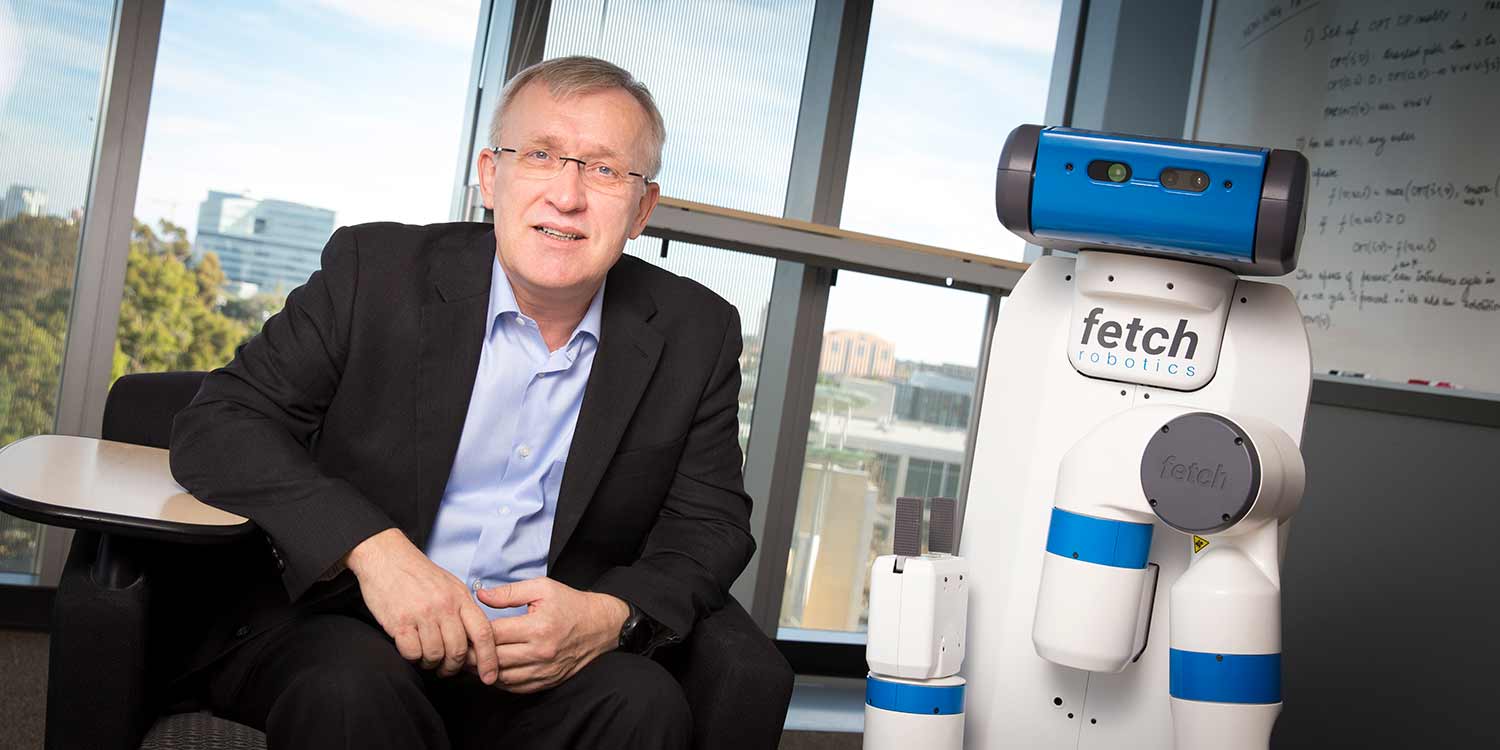Scientists Discover a New Signaling Pathway and Design a Novel Drug for Liver Fibrosis
Health & Behavior
By:
Published Date
By:
Share This:

Henrik Christensen, director of the UC San Diego Contextual Robotics Institute, says in a Science Robotics editorial this week that robots have important roles to play during a pandemic. Photo Credit: David Baillot
Can robots be effective tools in combating the COVID-19 pandemic? A group of leaders in the field of robotics, including Henrik Christensen, director of UC San Diego’s Contextual Robotics Institute, say yes, and outline a number of examples in an editorial in the March 25 issue of Science Robotics. They say robots can be used for clinical care such as telemedicine and decontamination; logistics such as delivery and handling of contaminated waste; and reconnaissance such as monitoring compliance with voluntary quarantines.
“Already, we have seen robots being deployed for disinfection, delivering medications and food, measuring vital signs, and assisting border controls,” the researchers write.
Christensen, who is a professor in the Department of Computer Science and Engineering at UC San Diego, particularly highlighted the role that robots can play in disinfection, cleaning and telepresence.
In addition to a number of other robotics experts from international and U.S. universities, co-authors include Marcia McNutt, president of the National Research Council and president of the National Academy of Sciences, who is an alumna of the Scripps Institution of Oceanography at UC San Diego.
“For disease prevention, robot-controlled noncontact ultraviolet (UV) surface disinfection has already been used because COVID-19 spreads not only from person to person via close contact respiratory droplet transfer but also via contaminated surfaces,” the researchers write.
“Opportunities lie in intelligent navigation and detection of high-risk, high-touch areas, combined with other preventative measures,” the researchers add. “New generations of large, small, micro-, and swarm robots that are able to continuously work and clean (i.e., not only removing dust but also truly sanitizing/sterilizing all surfaces) could be developed.”
In terms of telepresence, “the deployment of social robots can present unique opportunities for continued social interactions and adherence to treatment regimes without fear of spreading more disease,” researchers write. “However, this is a challenging area of development because social interactions require building and maintaining complex models of people, including their knowledge, beliefs, emotions, as well as the context and environment of interaction.”
“COVID-19 may become the tipping point of how future organizations operate,” researchers add. “Rather than cancelling large international exhibitions and conferences, new forms of gathering—virtual rather than in-person attendance—may increase. Virtual attendees may become accustomed to remote engagement via a variety of local robotic avatars and controls.”
“Overall, the impact of COVID-19 may drive sustained research in robotics to address risks of infectious diseases,” researchers go on. “Without a sustainable approach to research, history will repeat itself, and robots will not be ready for the next incident.”
Share This:
Keep up with all the latest from UC San Diego. Subscribe to the newsletter today.